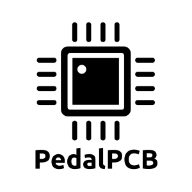You are using an out of date browser. It may not display this or other websites correctly.
You should upgrade or use an alternative browser.
You should upgrade or use an alternative browser.
Resources
- Thread starter fig
- Start date
Coda
Well-known member
This was a big help…
http://diy.smallbearelec.com/Projects/FurFace/FurFace.htm
This too…
http://www.geofex.com/article_folders/fuzzface/fffram.htm
http://diy.smallbearelec.com/Projects/FurFace/FurFace.htm
This too…
http://www.geofex.com/article_folders/fuzzface/fffram.htm
BuddytheReow
Breadboard Baker
This was really helpful for me when starting out. You don't actually need a beavis board, but the fundamentals and a handful of projects are there to build along with.
This one is incredibly important if you're interested in any theory. A must if you're interested in circuit designs and explains things very clearly if you're just starting out.
This one is incredibly important if you're interested in any theory. A must if you're interested in circuit designs and explains things very clearly if you're just starting out.
Last edited:
Coda
Well-known member
Another thing I'll add, though I'm sure not everyone would agree: clipped resistor legs make great jumpers...provided the distance is minimal. They also help been the board a little less cluttered, since you don't have all those long loopy jumper wires. Plus, everyone has tons of clipped resistor legs laying around, literally. Go ahead, look down, I guarantee you'll see one...
Big Monk
Well-known member
Another thing I'll add, though I'm sure not everyone would agree: clipped resistor legs make great jumpers...provided the distance is minimal. They also help been the board a little less cluttered, since you don't have all those long loopy jumper wires. Plus, everyone has tons of clipped resistor legs laying around, literally. Go ahead, look down, I guarantee you'll see one...
To piggyback on this for a moment: I tend to trim my resistors for use in the breadboard anyway. I do not generally use full leads and tons of wires. Everything is tidier, it's easier to swap stuff in and out, and I'll need to clip the leads anyway when I put them in an actual circuit anyway.
I keep a bin of pre-cut wires as well at various lengths for use as jumpers.
BuddytheReow
Breadboard Baker
http://www.muzique.com/ - Can't go wrong with that. Especially if you're a "tweaker"
http://www.geofex.com/ - Same here
https://www.coda-effects.com/ - great resource for pedal builders/modders
https://www.electrosmash.com/ - has some pretty good circuit analyses of Big name pedals
http://www.geofex.com/ - Same here
https://www.coda-effects.com/ - great resource for pedal builders/modders
https://www.electrosmash.com/ - has some pretty good circuit analyses of Big name pedals
Chuck D. Bones
Circuit Wizard
Take electrosmash's analyses with a grain of salt. Some are good, some are fairly close, and a few are not so good.
Here's one of the largest repositories of pedal schematics I've found.
http://revolutiondeux.blogspot.com/
They also have quite a few amp schematics.
Kit Rae runs the best Big Muff resource.
http://www.kitrae.net/music/music_big_muff.html
Bear in mind that any schematic you find on the 'net could have errors of one kind or another.
Here's one of the largest repositories of pedal schematics I've found.
http://revolutiondeux.blogspot.com/
They also have quite a few amp schematics.
Kit Rae runs the best Big Muff resource.
http://www.kitrae.net/music/music_big_muff.html
Bear in mind that any schematic you find on the 'net could have errors of one kind or another.
BuddytheReow
Breadboard Baker
How OD/Distortion circuits are designed with Opamps. Gives a good high level how they are designed. Actual component values are up to you, but this gives you a general idea.
 www.generalguitargadgets.com
www.generalguitargadgets.com
Design Your Own Distortion | General Guitar Gadgets
 www.generalguitargadgets.com
www.generalguitargadgets.com
JetFixxxer
Well-known member
Too lazy to repost everything 
 forum.pedalpcb.com
forum.pedalpcb.com
 forum.pedalpcb.com
forum.pedalpcb.com
Vendor List Thread
Didn't see one. Here's a few I use that some might not know. I get my pickup and hook up wiring here. https://www.remingtonindustries.com/ Some instrument cable here. https://www.redco.com/Bulk-Instrument-Cable/ Spark-Fun https://www.sparkfun.com/ McMaster-Carr https://www.mcmaster.com/...
A few websites and youtubers that deal with electronics
I get some useful information from these. http://www.funwithtransistors.net/ http://www.funwithtubes.net/ https://www.youtube.com/channel/UCk0fGHsCEzGig-rSzkfCjMw https://www.youtube.com/channel/UCSRTiJhBE5GsP-1fCbpFRWg
BuddytheReow
Breadboard Baker
Principles of Transistor Circuits by Stan Amos and Mike James. 9th edition. I found this in my local library. Google it to find it as a pdf. Very in-depth and lots of math, but it goes through transistors and their different uses. Not everything in here is applicable to guitar pedals, but a great way to understand how many circuits are wired the way that they are.
bowanderror
Well-known member
One of the best resources I've found for learning about guitar-specific electronics is Solid-State Guitar Amplifiers by Teemu Kyttälä. It does cover amplifiers, but the "Preamplifier Circuitry" chapter covers many pedal topics. It starts with basic gain stages & filters, but also covers tone/volume controls, clipping, and a smattering of effects like spring reverb, compression, tremolo, cabsims, etc. Teemu manages to cover the basic concepts as well as some math without overwhelming non-EEs. I highly recommend it!
BuddytheReow
Breadboard Baker
I feel weird throwing this on the list, but Electronics for Dummies. I found a pdf for it online (free with a Google search) and its about 1000 pages. Most of this is non-pedal related, but it will give you a phenomenal understanding of circuits that may or may not carry over to guitars. Many of the concepts here come with projects to help solidify the learning process and I would recommend for anyone as a beginner guide.
Chuck D. Bones
Circuit Wizard
Transistor and opamp biasing can be accomplished with a little algebra. Anything beyond that requires a working knowledge of calculus and Laplace Transforms. Unless you're satisfied to just run simulations.
I never had a decent circuit analysis textbook. They were all very dry and math-centric, no practical applications.
I never had a decent circuit analysis textbook. They were all very dry and math-centric, no practical applications.
BuddytheReow
Breadboard Baker
Hey @Chuck D. Bones can you recommend a good resource for learning applications? I.e. here’s all the things you can do with a transistor, diodes, ICs. You know, make shit
fig
Village Idiot
I just read 20 minutes of Lapdance Transformers and I saw no math whatsoever.Transistor and opamp biasing can be accomplished with a little algebra. Anything beyond that requires a working knowledge of calculus and Laplace Transforms. Unless you're satisfied to just run simulations.
I never had a decent circuit analysis textbook. They were all very dry and math-centric, no practical applications.
Then I read 20 minutes of Laplace transforms. Lots of probability and integral functions. Then it changed to some alien language and I lost interest. Fundamentals first fig.
Thanks
Chuck D. Bones
Circuit Wizard
I heard that Wampler wrote a good book on modding pedals. Found a PDF online. I'll get back to you on whether it teaches electronics or is simply a cookbook.Hey @Chuck D. Bones can you recommend a good resource for learning applications? I.e. here’s all the things you can do with a transistor, diodes, ICs. You know, make shit
Chuck D. Bones
Circuit Wizard
How to Modify Guitar Pedals is a good book, but it's pretty much a straight cook book. Says what to do, but no details on why the mods do what they do or how to come up with your own mods or designs. You can buy a paperback from the Big A for $70 or you can perform a Google search for a pdf.
Similar threads
- Replies
- 105
- Views
- 5K
- Question
- Replies
- 31
- Views
- 1K




